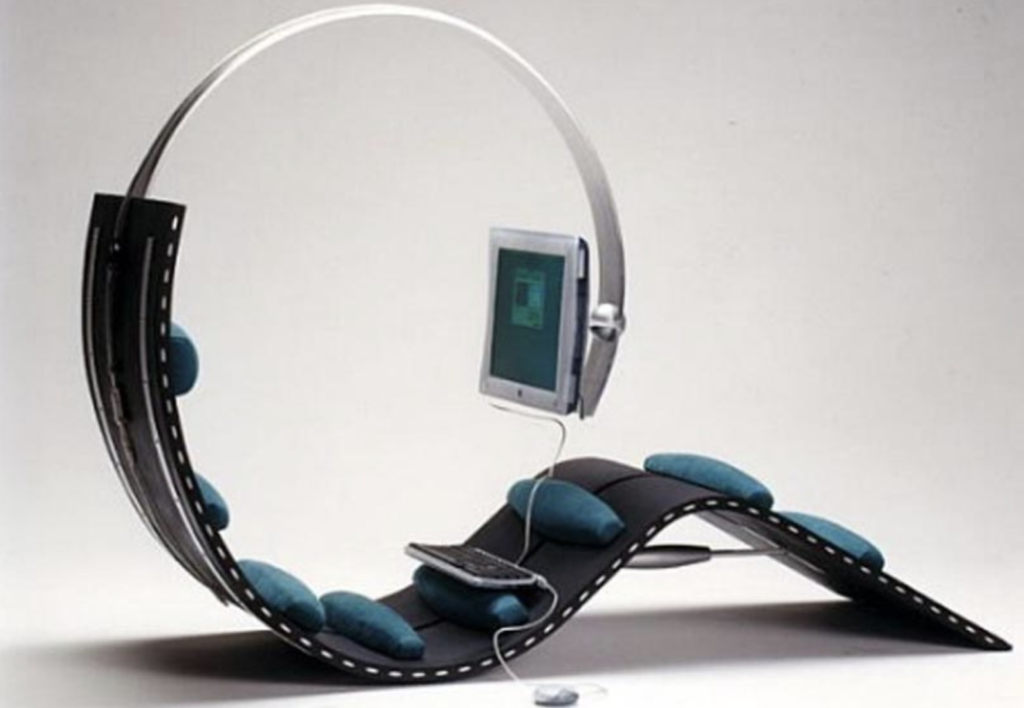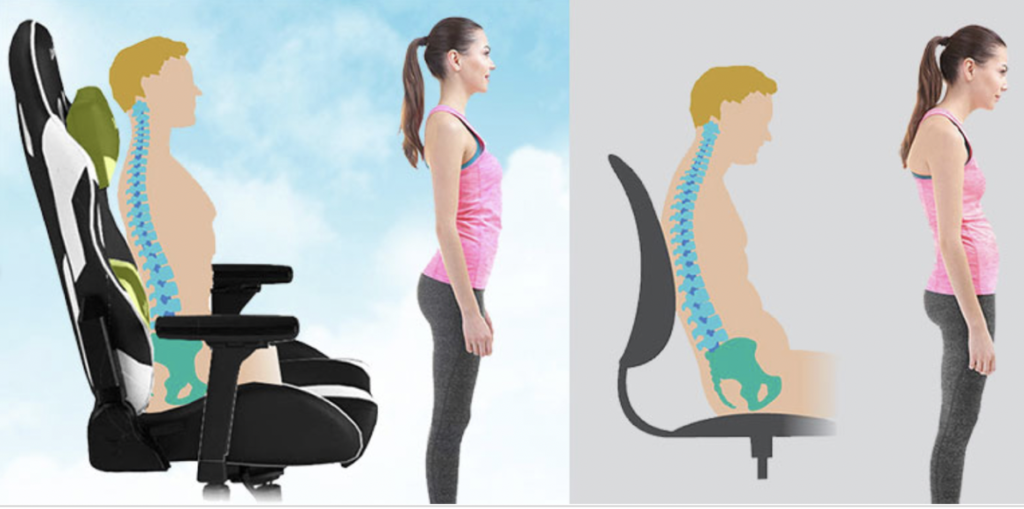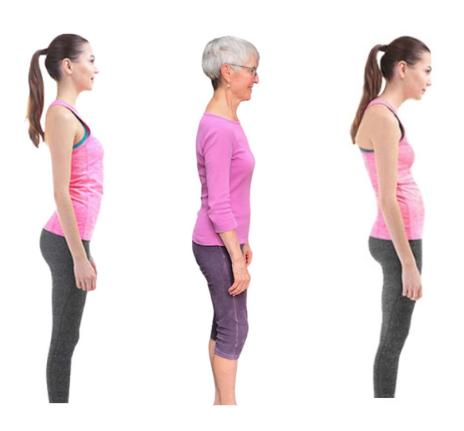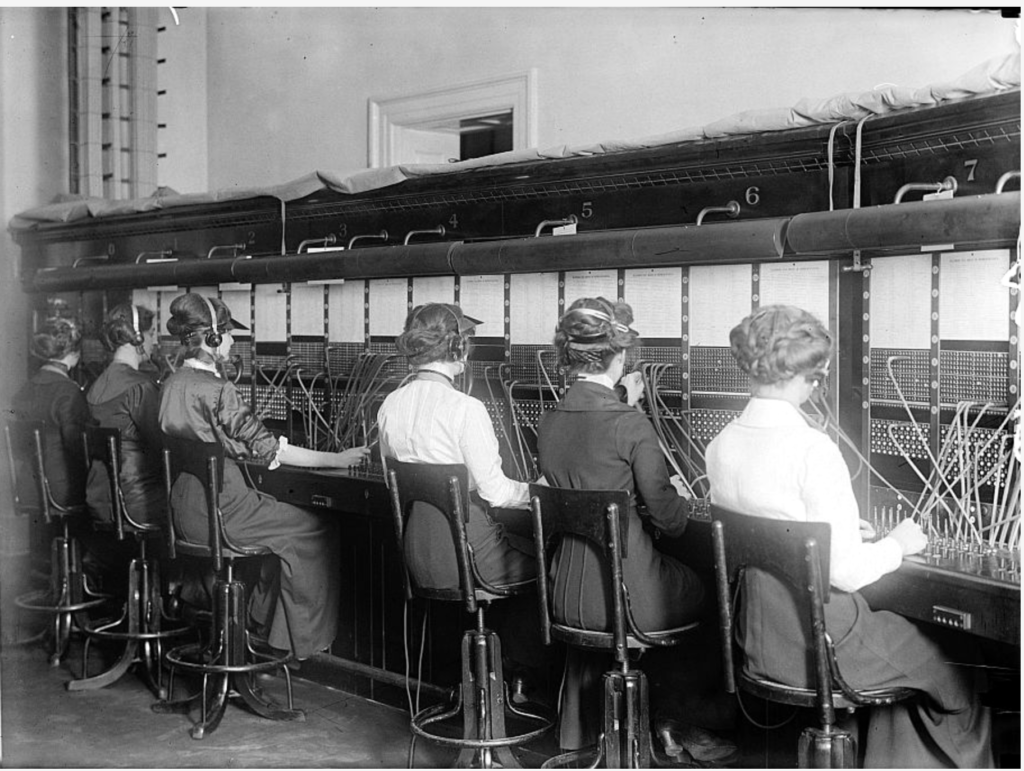Annals of catastrophic posture: modern chairs edition

At first glance I thought this chair was a joke.
But no, the Surf Chair won the Best Product award for Leif Sorenson and Kenneth Lylover at the 2000 Scandinavian Furniture Fair, in the computing category. I couldn’t find any evidence that it was produced commercially, but a quick look at gaming chairs shows that the basic idea has never died.
How we sit shapes our bodies. We spend an enormous amount of time sitting at desks in front of computers. The body this chair shapes is the caterpillar from Alice and Wonderland.
So, a hookah smoking caterpillar is our new body of choice?
The problem is that we don’t know what the problem is.
We think that our problem with sitting is that we have to hold our body weight up against the force of gravity. Therefore, the solution is to build a chair that supports our lumbar curve, and our neck, and anything else that appears to be sagging.
Here’s the reasoning, from a post on a site promoting gaming chairs:
“When sitting in a normal office chair, your spine has to hold up your arms, torso, and head against gravity.As your back tires from the strain, it curves into a slouch. As time passes, slouching becomes more prevalent until it becomes your default position.
“Gaming chairs correct these issues with simple ergonomic science. Instead of your spine holding your body against gravity, gaming chairs do the work for you. A high padded backrest with neck and lumbar cushions provides the main support.” (emphasis mine)
And here is the picture to prove it:

It may be true that sitting in a normal office chair will tire your back. Certainly, the chair in the picture on the right doesn’t do us any favors.
But the “good” posture from the gaming chair is in fact as problematic in its own way as the slouch. It might be harder to see, because our culture reads someone thin standing with their chest lifted as being in good posture.
The damage to the chest-lifted spine, however, is still severe, as evidenced by the deep hollow in her back. With X-ray vision, we would see that instead of stacking in a single line, the bones of her spine are lifted in the front and compressed in the back. That means the soft, spongey discs between the bones are pinched in the back and pushed out at the front. And that puts her at risk for back pain.
No amount of support while we sit is going to make this a healthy posture. In fact, the “support” just exaggerates the curves.

Thing is, it’s been four million years since our earliest ancestors started walking on two legs. And gravity has been with us every step of the way. In all that time, our spines have adapted to manage the weight of our arms, torso and head with ease.
We do it by working with gravity, not against it.
And, when we work with gravity, we have a single line of bone in our spine that supports our weight as our muscles relax.
The woman in the middle, the one whose top is smoother because her spine isn’t compressed either in the front or the back, is my teacher, Jean Couch. At 77, she looks stronger and more relaxed than the much younger women on either side.
Human cultures all over the world, and our own culture until about the 1920s, have had excellent posture, and sat for hours without strain, all without benefit of gaming chairs.
Take a look at this photo of “hello girls,” as telephone operators were briefly called. It’s from Durbin, South Africa, circa 1915.

The chair has a flat seat. There is no lumbar support. Instead, there’s a bar to support the lower thoracic.
These women have long straight spines, and they sit with a healthy angle between forearm and upper arm. Although they work long hours at the early 20th century equivalent of a computer, their heads balance elegantly atop long, relaxed necks. Check how soft and relaxed their shoulders look, and how straight their upper backs are.
We don’t need special chairs to support weak, imperfectly designed bodies.
We need a sitting posture that creates a single line of bones, and then we need to relax. Too bad our chairs aren’t helping.
In the meantime, you might want to check out my teacher, Jean Couch, in the video she made for NPR on sitting well in almost any modern chair you meet – except possibly chairs that shape you into Alice’s caterpillar.
One comment on “Annals of catastrophic posture: modern chairs edition”
Hi Elvia, I’m glad you found it helpful.
Comments are closed.